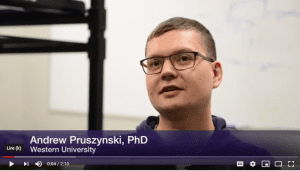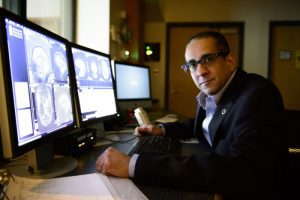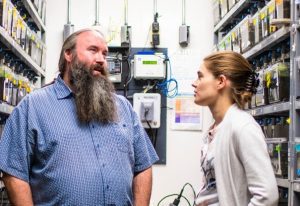Department of Pathology
Position #: 25772
The Department of Pathology in the Rady Faculty of Health Sciences, University of Manitoba invites applications for a full-time tenure-track position at the Assistant or Associate Professor level, commencing on July 1, 2019, or on a date mutually agreed upon. The Department seeks an emerging scholar with a commitment to excellence in research and teaching. Outstanding candidates with expertise in the disciplines of neurobiology / neuropathology will be preferred, to complement or extend the department’s strengths in perinatal and forensic neuropathology. A competitive start-up package will be provided. Salary and rank will be commensurate with experience and qualifications. The new recruit is expected to develop and maintain a rigorous and independently funded research program. Other duties will include undergraduate teaching, graduate teaching and supervision, and service-related activities.
The successful candidate will have a Ph.D. and at least 2 years relevant post-doctoral research experience;
a track record of high quality scholarly research leading to peer reviewed publications; will have, or demonstrate the potential to establish an independent, innovative, scholarly, externally fundable research program and will have demonstrated strength in or strong potential for teaching contributions. Experience working with human tissue is particularly desirable. Preference will be given to candidates with demonstrated evidence of the ability to work in a collaborative environment.
The Rady Faculty of Health Sciences is located at the Bannatyne campus of the University of Manitoba, in connection with the Health Sciences Centre, which is the largest health care facility in the province. The Department currently has over 50 full-time pathologists (most affiliated with Shared Health Manitoba), including 3 neuropathologists (one of whom is a past Tier 1 Canada Research Chair), and 1 other full-time tenured faculty member. The Department offers an MSc program. Cross appointment with a suitable basic science department allows the candidate to host PhD students. The Department has a well-equipped research facility including: Zeiss PALM MicroBeam laser microdissection system, Zeiss Apotome structured illumination fluorescence microscope, Typhoon FLA9500 variable mode laser scanner and imaging system, whole slide scanning systems, cell culture equipment, qRT-PCR, cryostat, freezers, and considerable bench space. A complete range of histology and conventional electron microscopy services is available through the affiliated hospital pathology department. The Central Animal Care Services provide a broad spectrum of support for small and large animals including housing, transgenic, surgical, and behavior testing (http://umanitoba.ca/healthsciences/medicine/units/cacs/). Animal imaging services include: Optical imaging, Micro-CT, Micro-PET, 7 Tesla MRI, PET-MRI, and Ultrasound (http://umanitoba.ca/faculties/health_sciences/medicine/units/imaging_transgenic/index.html). Strong research collaborations in neuroscience and developmental biology are possible through other University of Manitoba departments (http://umanitoba.ca/faculties/health_sciences/medicine/research/index.html). The Children’s Hospital Research Institute of Manitoba (http://chrim.ca) offers core facilities and grant opportunities for relevant research. Numerous local granting agencies provide support for early career researchers. Further information about the Department can be obtained from (http://umanitoba.ca/faculties/health_sciences/medicine/units/pathology/).
Winnipeg is the largest city in the Province of Manitoba. The city has a rich cultural environment, including symphony, opera, dance, theatre, professional sports, and ethnic festivals. The region provides ample opportunities for outdoor recreation in all seasons (https://www.tourismwinnipeg.com).
The University of Manitoba is strongly committed to equity and diversity within its community and especially welcomes applications from women, racialized persons, Indigenous Peoples, persons with disabilities, persons of all sexual orientations and genders, and others who may contribute to the further diversification of ideas. If you require accommodation supports during the recruitment process, please contact U of M’s Equity, Diversity and Inclusion Facilitator, Valerie Williams at Valerie.williams@umanitoba.ca or 204-474-8371. All
qualified candidates are encouraged to apply; however, Canadian citizens and permanent residents will be given priority.
Application materials, including letters of reference, will be handled in accordance with the protection of privacy provision of The Freedom of Information and Protection of Privacy (Manitoba). Please note that curriculum vitae may be provided to participating members of the search process.
Applications will be accepted until March 31, 2019 or until the position has been filled.
Applications must include: a cover letter, a curriculum vitae, a summary of research interests, a three page research plan (covering the first year and the subsequent 3-5 years), a description of teaching philosophy, and the names and contact information of three referees for letters of reference. All of the information should be assembled into a single PDF file. Please ensure to specify position number 25772 in the application. Applications should be addressed to the chair of the search committee:
Dr. Gabor Fischer, Department Head
Department of Pathology
Rady Faculty of Health Sciences
University of Manitoba
401 Brodie Centre – 727 McDermot Avenue
Winnipeg, Manitoba R3E 3P5
c/o Amanda.Wardekker@umanitoba.ca






 The Brain Prize 2019: French neuroscientists honoured for outstanding research into small vessel strokes in the brain
The Brain Prize 2019: French neuroscientists honoured for outstanding research into small vessel strokes in the brain  Jean-Pierre Julien’s team recently published an article in the high impact journal, the Journal of Clinical Investigations, about a new experimental therapy for ALS and frontotemporal dementia based on the use of antibodies that target the abnormal accumulation of a protein called TDP-43 in degenerating neurons. The formation of TDP-43 aggregates is associated with ALS development.
Jean-Pierre Julien’s team recently published an article in the high impact journal, the Journal of Clinical Investigations, about a new experimental therapy for ALS and frontotemporal dementia based on the use of antibodies that target the abnormal accumulation of a protein called TDP-43 in degenerating neurons. The formation of TDP-43 aggregates is associated with ALS development. 


